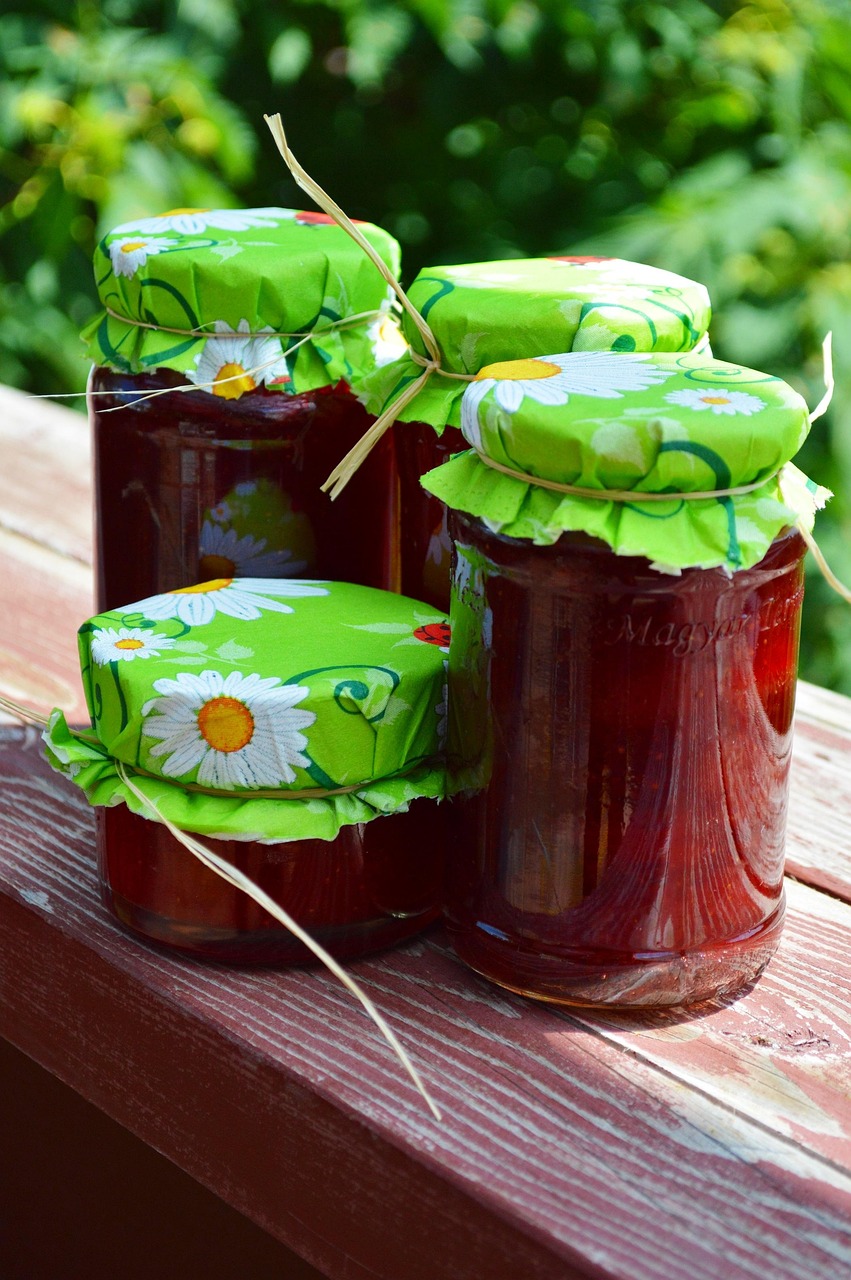
Canning for Beginners
If you are new to canning, the first thing you should know is that there are two different methods of canning. The first method is water bath canning which is essentially just boiling your jars for a particular amount of time. The second method is called pressure canning which will allow you to adjust the pressure of the pot to what fits your canning needs. Per the FDA, only foods high in acid can be water bath canned but some folks do what is known as “rebel canning” and still have good results. Low acidic foods must be pressure canned. Things than can be water bath canned includes jams and jellies, tomato sauces, pickles, relishes, salsa, and sauces.
What You Will Need
Water Bath Canning

Water bath canning is great for anyone just starting out. Though they do make water bath canners like the one here (which is essentially just a large pot with a rack to hold your jars off the bottom), you do not need to purchase one to be able to water bath can. You can simply line the bottom of a large pot with canning rings to keep your jars off the bottom of your pot to prevent scorching. When water bath canning, you will first want to wash and sterilize your jars. I typically just toss all the jars I plan to use into a large pot and boil them for 10-20 minutes.
Once your jars are cool enough to handle, you may go ahead and ladle in whatever you are canning. If you are canning something such as pickles, I always try to pack my cucumbers into the jar pretty tightly before pouring my brine over them. It is best to use new lids to ensure a good seal, but you can absolutely reuse old lids as long as they have been cleaned and sterilized. I recommend these Ball brand lids. Just keep in mind, if you are reusing lids, they do wear down over time which could cause some of your jars not to seal. If you ever have jars that do not seal, you can always try to re-can them or just put them in your refrigerator and use them. Once you have your jars packed, wipe your jar rims with white vinegar and screw your lids on fingertip tight and place into your pot. (Tight enough that liquid will not escape from your jars but loose enough that air can still escape). Add enough water to your pot to cover your jars and bring to a boil. Once at a rolling boil, set your timer for the recommended time listed on your recipe.
And that’s it, remove your jars once they are done and place on a towel to cool for 24 hours. You should start to hear some of your jar lids pop which is a good sign that you are getting successful seals. I always check for a good seal two different ways. I first make sure that the button on the lid is flat. Then, I remove the rings and grab the jar by just the edges of the lid and lift it up. If you have a good seal, you should be able to lift your jar just by the lid and the lid stay intact. Date your jars and store them in a cool dark place if all possible with the rings off.
Pressure Canning

Moving on, pressure canning is a bit trickier for the simple fact that it requires a bit more of your time and attention. If you have ever heard anyone talk about canning, I am sure you have heard the horror stories about pressure canners exploding. I am here to assure you that pressure canners are not as scary as they are often made out to be. Pressure canners have a come a long way and have a lot more safety features than they once had to prevent this from happening.
So, just like with water bath canning you will sterilize and pack your jars the same way. With this method, we only want to fill our pressure canner so that the water reaches about 2 inches up our jars. For specific water measurements, read here. Before starting the canning process, hold your lid up to the light and ensure that your steam vent is clear of debris. You should also make sure that your gasket is in good condition, (if it has any cracks or appears dry you will want to replace it). Once you place your lid on, simply put your pot on your stove and turn the heat to high.
Once your pot begins to release steam, set a timer for 10 minutes. Once 10 minutes has passed, place your weight on and watch your gauge until it reaches the amount of pressure needed. You can refer to this chart for how many pounds of pressure is needed. Once you reach the specified pressure, start your timer. Going over the specified pressure range is okay but if you go below, you will need to restart your timer. This is where it can become a little tricky. You will need to keep your eye on your dial and adjust your heat accordingly to keep it in range. Some pressure canners have a weight that help to regulate the pressure in your pot. Once your time is up, turn the heat off and wait until the dial pressure reads zero. Once it is at zero, you may remove your lid and place your jars on a towel and allow to seal just as with water bath canning.
Always read your user manual as some things may differ based on your pressure canner’s manufacturer.

